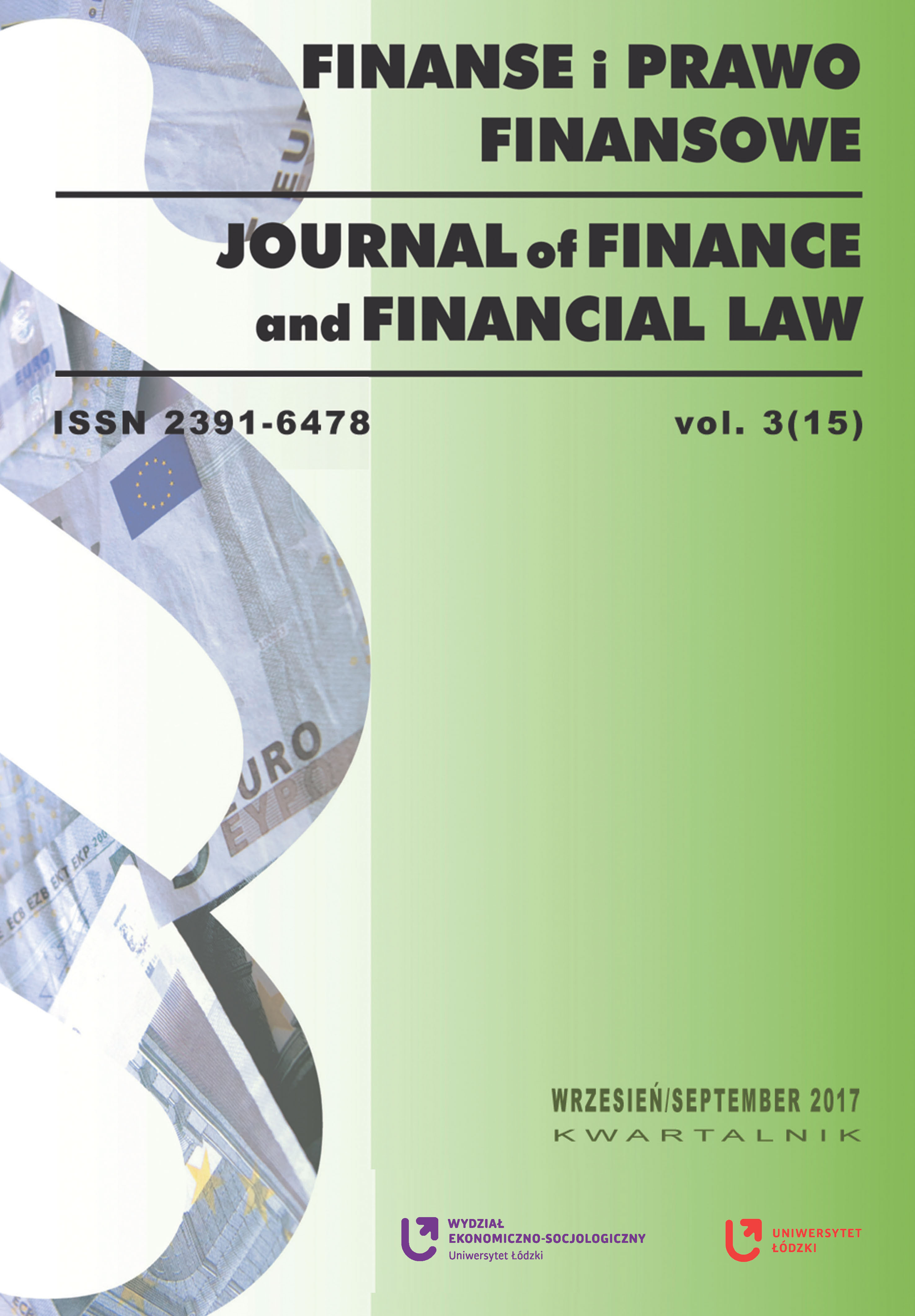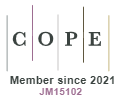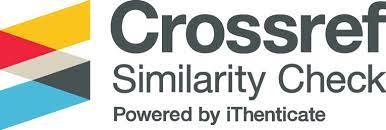The Apotheosis of Greed in the Financial Markets in the Selected Feature Films
DOI:
https://doi.org/10.18778/2391-6478.3.15.02Keywords:
economic education, financial markets, greed, movie in education processAbstract
Nowadays, in economic education, especially in Western Europe and the USA, it is becoming increasingly important to use feature films to illustrate: specific economic processes and phenomena, the behavior of investors in financial markets, as well as financial, social and psychological consequences of these behaviors. The paper discusses the fragments of selected films, foreign and Polish, which relate to the greed of investors in the financial markets or refer to their attitude to money. Fragments of these films, as well as other images can be used in the teaching process and during specialized courses in broadly understood finance.
Downloads
References
Bay D., Felton S., 2012, Using popular films as a teaching resource in accounting classes, American Journal of Business Education – March/April.
Google Scholar
Berger J., Pratt C., 1998, Teaching business communications ethics with controversial films, „Journal of Business Ethics”, vol. 17, 16.
Google Scholar
Boatman K., Courtney R., Lee W., 2008, See how they learn: The impact of faculty and student learning styles on student performance in introductory economics, „American Economist”, vol. 52, 1.
Google Scholar
Braun C., 2011, Capitalism in sic westerns by John Ford, „Journal of Economic Education”, vol. 42, 2.
Google Scholar
Buchanan D., Huczynski A., 2004, Images of influence: 12 angry men and thirteen days, „Journal of Management Inquiry”, vol. 13, 4.
Google Scholar
Bumbus M., 2005, Using motion pictures to teach management: Refocusing the camera lens through the infusion approach to diversity, „Journal of Management Education”, vol. 29, 6.
Google Scholar
Cardon P., 2010, Using films to learn about nature of cross-cultural stereotypes in intercultural business communication courses, „Business Communication Quarterly”, vol. 7, 3.
Google Scholar
Champoux J., 1999, Film as a teaching resource, „Journal of Management Inquiry”, vol. 8, 2.
Google Scholar
Day H., Foltz M., Heyse K., Marksbary C., Sturgeon M., Reed S., 1997, Teaching economics using children’s literature, National Council on Economic Education, New York.
Google Scholar
Dixit A., 2005, Restoring fun to game theory, „Journal of Economic Education”, vol. 36, 3.
Google Scholar
Gaiacalone R., Jurkiewicz C., 2001, Lights, camera, action: Teaching ethical decision making through the cinematic experience, „Teaching Business Ethics”, vol. 5, 1.
Google Scholar
Goleman D., 1996, Emotional intelligence, Bloomsbury, London.
Google Scholar
Kindleberger C., 1999, Szaleństwo, panika, krach. Historia kryzysów finansowych. WIG-PRESS, Warszawa.
Google Scholar
Leeson N., 1997, Łajdak na giełdzie, WIG-PRESS, Warszawa.
Google Scholar
Leet D., Houser S., 2003, Economics goes to Hollywood: Using classic films and documentaries to create an undergraduate economics course, „Journal of Economic Education”, vol. 34, 4.
Google Scholar
Macy A., Terry N., 2008, Using movies as a vehicle for critical thinking in economics and business, „Journal of Economics and Economics Education Research”, vol. 9, 1.
Google Scholar
Mallinger M., Rossy G., 2003, Film as a lens for teaching culture: Balancing concepts, ambiguity and paradox, „Journal of Management Education”, vol. 27, 5.
Google Scholar
Maynard R., 1971, The celluloid curriculum: How to use movies in the classroom, Hayden, New York.
Google Scholar
McAdams T., Duclose L., 1999, Teaching business ethics with computer-based media? A caution-ary analysis, „Teaching Business Ethics”, vol. 3.
Google Scholar
Mixton F., 2010, More economics in the movies: Discovering the modern theory of bureaucracy in scenes from Conspiracy and Valkyrie, „Journal of Economics and Economic Education Research”, vol. 11, 1.
Google Scholar
Nofsinger J., 1995, Barbarians at the gate: A capstone corporate finance project, „Financial Practice and Education”, vol. 5, 1.
Google Scholar
Parker R., 2009, Watch this clip: Using films as an augmentation to lecture and class discussion, „Academy of Educational Leadership Journal”, vol. 13, 4.
Google Scholar
Pump and Dump Schemes, 2001, U.S. Securities and Exchange Commission, March 12.
Google Scholar
Serey T., 1992, Carpe Diem: Lessons about life and management from Dead Poets Society, „Journal of Management Educations”, vol. 16.
Google Scholar
Sexton R., 2006, Using short movie and television clips in the economics principles class, „Journal of Economic Education”, vol. 37, 4.
Google Scholar
Stiglitz J., 2011, Freefall: America, free markets, and the singing of the world economy, Papadopoulos, Athens.
Google Scholar
Stratton M., Kass D., Rotenberry P., 2011, Affective events theater: Creating teaching, moments from film and television to explore emotions in the workspace, „Journal of Academy of Business Education”, vol. 12.
Google Scholar
Tzu S., 2012, Sztuka wojny, Studio Emka.
Google Scholar
Zieliński R., 1997, Kulisy piramid finansowych, Wydawnictwo Piramida, Warszawa.
Google Scholar
Ustawa z dnia 29 lipca 2005 r. o obrocie instrumentami finansowymi, Dz.U. 2005, nr 183, poz. 1538 z poźn. zm.
Google Scholar
https://www.knf.gov.pl/dla_rynku/Informacje_dla_podmiotow_nadzorowanych/Rynek_kapitalowy_info_dla_podmiotow/mar/Informacja_poufna_q&a.html
Google Scholar
Cudze pieniądze (Other people’s money), reż. Norman Jewison, Warner Bros 1991.
Google Scholar
Giełda za kratami (Buy and cell), reż. Robert Boris, Empire Pictures 1987.
Google Scholar
Nieoczekiwana zmiana miejsc (Trading places), reż. John Landis, Paramount Pictures 1983.
Google Scholar
Pan Verdoux (Monsieur Verdoux), reż. Charles Chaplin, Charles Chaplin Production 1947.
Google Scholar
Partner (The Associate), reż. Donald Patrie, Hollywood Pictures 1996.
Google Scholar
Pretty woman (Pretty woman), reż. Garry Marshall, Touchstones Pictures 1990.
Google Scholar
Rodzinny interes (Family Business), reż. Sidney Lumet, Gordon Company 1989.
Google Scholar
Ryzyko (Boiler Room), reż. Ben Younger, New Line Cinema 2000.
Google Scholar
Siedem (Seven), reż. David Fincher, Cecchi Gori Pictures, New Line Cinema 1995.
Google Scholar
Spekulant (Rogue trader), reż. James Dearden, Granda Film Productions 1999.
Google Scholar
Wall Street (Wall Street), reż. Oliver Stone, Twentieth Century Fox Film Corporation 1987 .
Google Scholar
Wall Street: pieniądz nie śpi (Wall Street: money never sleeps), reż. Oliver Stone, Twentieth Century Fox Film Corporation 2010.
Google Scholar
Wilk z Wall Street (The wolf of Wall Street), reż. Martin Scorsese, Paramount Pictures 2013.
Google Scholar
Żądza bankiera (Le capital), reż. Costa Gavras, The Buremu 2012.
Google Scholar
Amok, reż. Natalia Koryncka-Gruz, Fokus Film 1998.
Google Scholar
Kariera Nikodema Dyzmy, reż. Jan Rybkowski, Zespół Filmowy „Silesia”, 1980.
Google Scholar
Kariera Nikosia Dyzmy, reż. Jacek Bromski, Vision Film Distribution 2002.
Google Scholar
Lalka, reż. Ryszard Ber, Zespół Filmowy „Pryzmat” 1977.
Google Scholar
Nad Niemnem, reż. Zbigniew Kuźmiński, Syrena EG 1986.
Google Scholar
Pierwszy milion, reż. Waldemar Dziki, Pleograf 2000
Google Scholar
Układ zamknięty, reż. Ryszard Bugajski, Filmicon 2013.
Google Scholar
Va banque, reż. Juliusz Machulski, Studio Filmowe „Kadr” 1981.
Google Scholar
Ziemia obiecana, reż. Andrzej Wajda, Zespół filmowy „X” 1975.
Google Scholar
Downloads
Published
How to Cite
Issue
Section
License

This work is licensed under a Creative Commons Attribution-NonCommercial-NoDerivatives 4.0 International License.














